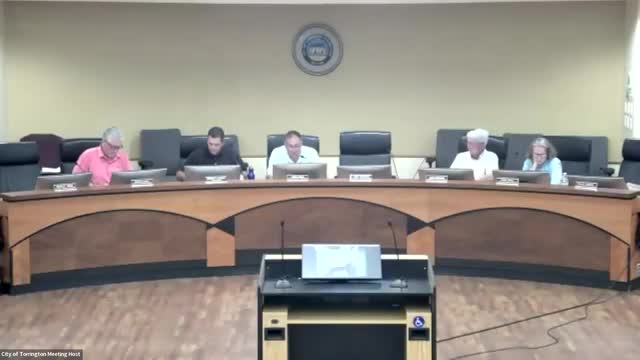Zoning Debate Sparks Controversy Over Temporary Shelters
July 08, 2024 | Torrington, Northwest Hills County, Connecticut

This article was created by AI summarizing key points discussed. AI makes mistakes, so for full details and context, please refer to the video of the full meeting. Please report any errors so we can fix them. Report an error »

During a recent government meeting, officials engaged in a detailed discussion regarding zoning regulations for temporary shelter facilities, focusing on definitions, occupancy limits, and operational requirements. The conversation highlighted the need for clarity in zoning laws to ensure that temporary shelters are appropriately regulated and that existing health codes are adhered to.
Commissioners debated the definition of a \"sleeping area,\" referencing Hartford's regulations, which specify that a bedroom must consist of at least 50 square feet of interior space. This definition is crucial as it impacts how many individuals can be accommodated in temporary shelters, which are subject to special exceptions based on zoning classifications.
The meeting also addressed parking requirements, stipulating that shelters must provide off-street parking for one vehicle per six occupants, emphasizing the importance of maintaining neighborhood integrity. The commissioners acknowledged that while there are suitable properties for such facilities, many residential areas may not be appropriate for conversion into shelters.
Concerns were raised about the potential for confusion regarding staffing requirements in shelters. It was clarified that for every 25 occupants, at least one staff member must be present, with additional staff required as occupancy increases. This measure aims to ensure safety and adequate supervision within the facilities.
Public input was solicited, with one downtown business owner expressing concerns about the impact of new shelter regulations on local businesses. He emphasized the need for community engagement in the decision-making process, arguing that downtown businesses are already accustomed to managing issues related to homelessness. He urged the commission to consider the historical role of churches in providing shelter and to exempt them from stringent zoning regulations.
The meeting concluded with a commitment to further refine the proposed regulations, ensuring they are clear and effective while balancing community needs and safety concerns. The commissioners agreed to continue discussions and seek additional public feedback before finalizing any decisions.
Commissioners debated the definition of a \"sleeping area,\" referencing Hartford's regulations, which specify that a bedroom must consist of at least 50 square feet of interior space. This definition is crucial as it impacts how many individuals can be accommodated in temporary shelters, which are subject to special exceptions based on zoning classifications.
The meeting also addressed parking requirements, stipulating that shelters must provide off-street parking for one vehicle per six occupants, emphasizing the importance of maintaining neighborhood integrity. The commissioners acknowledged that while there are suitable properties for such facilities, many residential areas may not be appropriate for conversion into shelters.
Concerns were raised about the potential for confusion regarding staffing requirements in shelters. It was clarified that for every 25 occupants, at least one staff member must be present, with additional staff required as occupancy increases. This measure aims to ensure safety and adequate supervision within the facilities.
Public input was solicited, with one downtown business owner expressing concerns about the impact of new shelter regulations on local businesses. He emphasized the need for community engagement in the decision-making process, arguing that downtown businesses are already accustomed to managing issues related to homelessness. He urged the commission to consider the historical role of churches in providing shelter and to exempt them from stringent zoning regulations.
The meeting concluded with a commitment to further refine the proposed regulations, ensuring they are clear and effective while balancing community needs and safety concerns. The commissioners agreed to continue discussions and seek additional public feedback before finalizing any decisions.
View full meeting
This article is based on a recent meeting—watch the full video and explore the complete transcript for deeper insights into the discussion.
View full meeting
